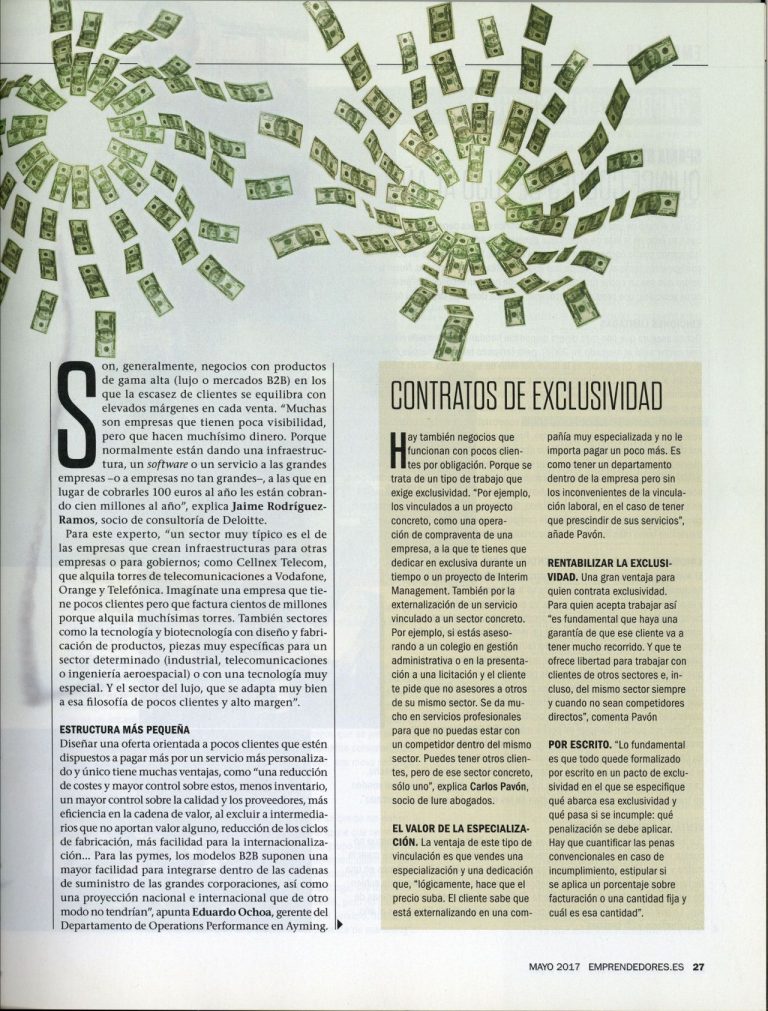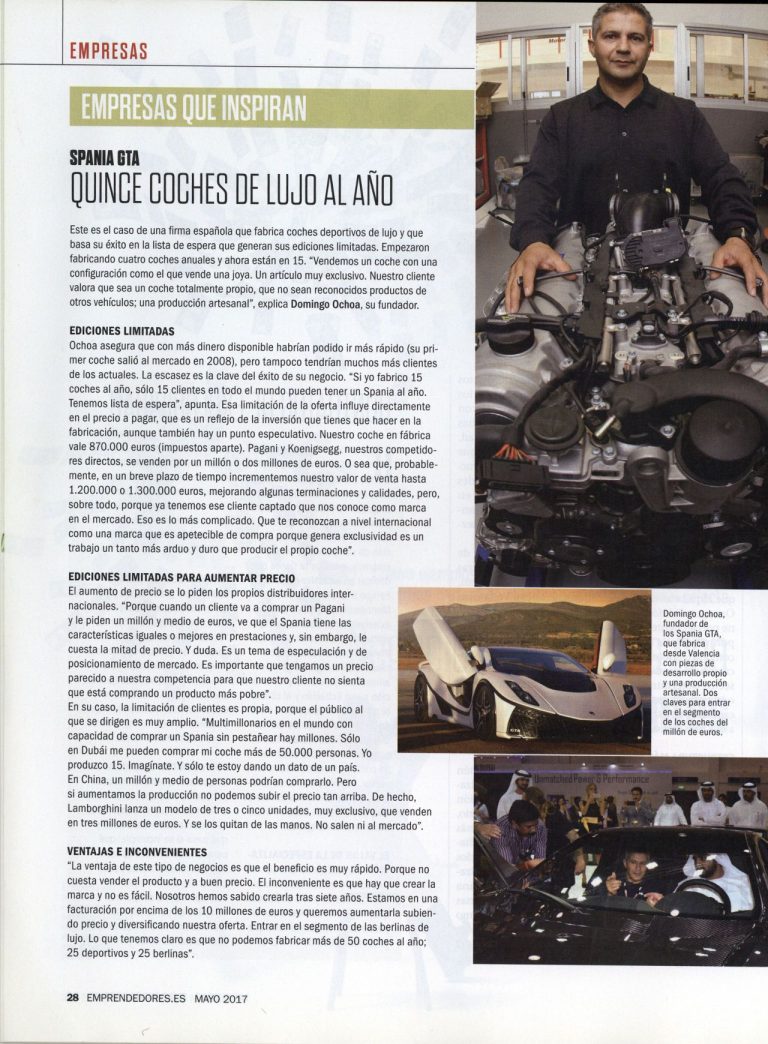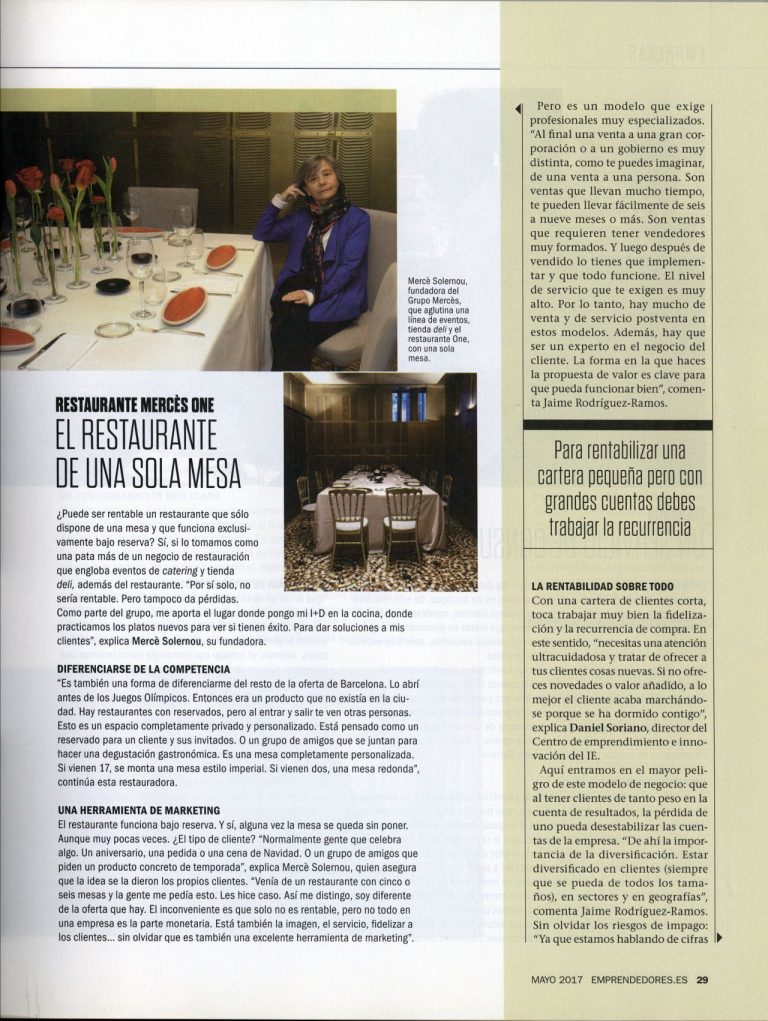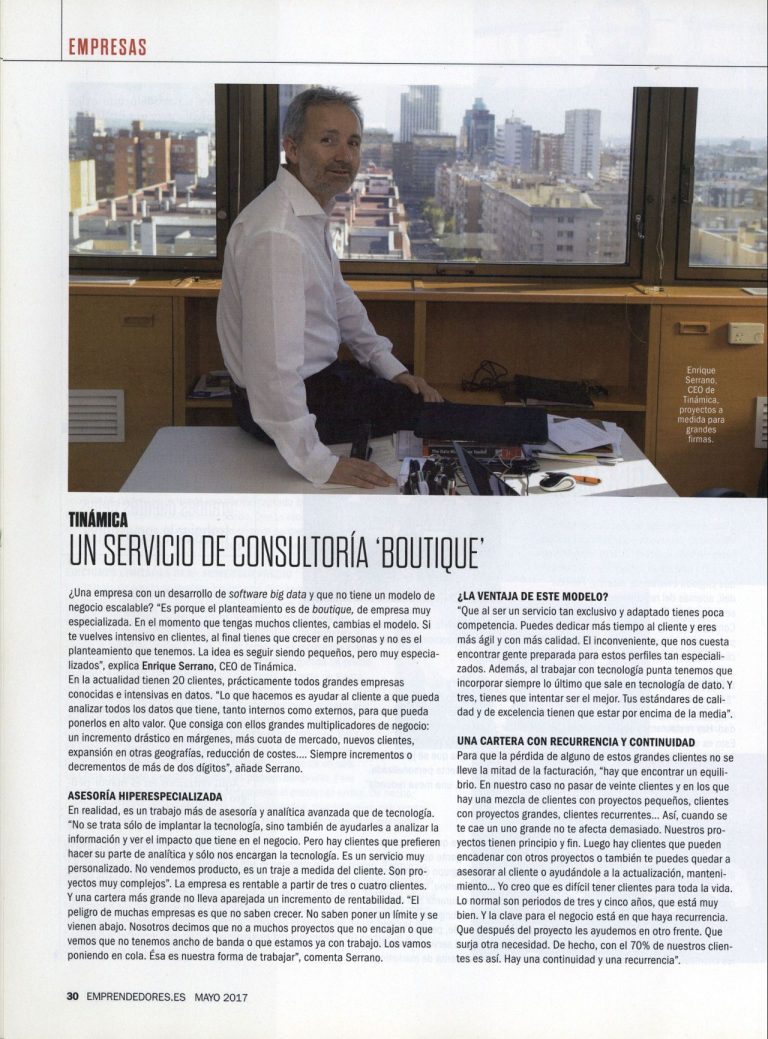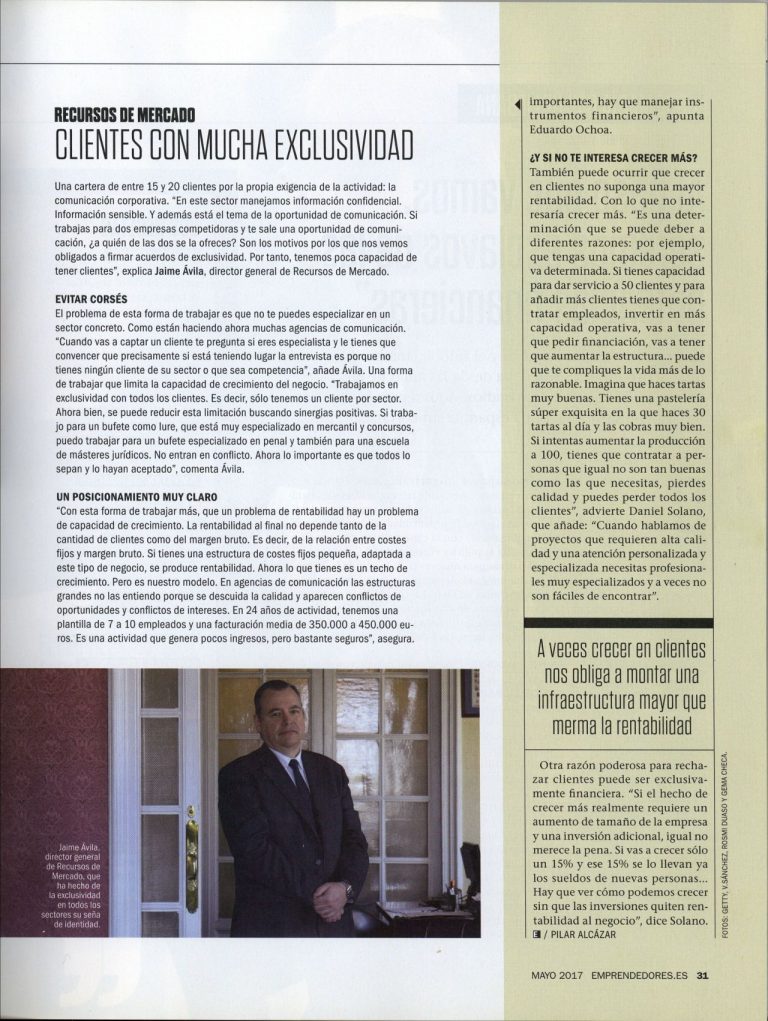Four entrepreneurial examples of how to make a small but very select client portfolio profitable. It is not common, but some businesses base their profitability on maintaining a small client portfolio, so much so that they allow themselves the luxury of rejecting clients by inviting them to join a waiting list. So much so that they allow themselves the luxury of rejecting clients by inviting them to join a waiting list. Who are they and how do these privileged ones work?
These are generally businesses with high-end products (luxury or B2B markets) where the scarcity of customers is balanced by high margins on each sale. “Many are companies that have little visibility, but make a lot of money. Because they are usually providing an infrastructure, software or a service to large companies – or not so large companies -,…”
RECURSOS DE MERCADO
CLIENTS WITH HIGH EXCLUSIVITY
A portfolio of between 15 and 20 clients due to the very nature of the activity: corporate communication. “In this sector we handle confidential information. And then there is the issue of the communication opportunity. If you work for two competing companies and you have a communication opportunity, which of the two do you offer it to? These are the reasons why we are forced to sign exclusivity agreements. Therefore, we have little capacity to have clients,” explains Jaime Ávila, General Director of Recursos de Mercado.
AVOIDING HICCUPS
The problem with this way of working is that you cannot specialise in a specific sector. As many communication agencies are doing now. “When you go to attract a client, they ask you if you are a specialist and you have to convince them that if the interview is taking place, it is precisely because you don’t have any clients in their sector or who are competitors,” adds Ávila. A way of working that limits the business’s capacity for growth. “We work exclusively with all clients. In other words, we only have one client per sector”.
However, this limitation can be reduced by looking for positive synergies. If I work for a law firm like Iure, which is highly specialised in commercial and insolvency law, I can work for a law firm specialised in criminal law and also for a law school. There is no conflict. The important thing now is that everyone knows about it and has accepted it,” says Ávila.
A VERY CLEAR POSITIONING
“With this way of working, rather than a problem of profitability, there is a problem of growth capacity. In the end, profitability does not depend so much on the number of customers as on the gross margin. That is to say, the ratio between fixed costs and gross margin. If you have a small fixed cost structure, adapted to this type of business, profitability is produced. Now what you have is a growth ceiling. But that is our model. In communication agencies, I don’t understand large structures because quality is neglected and there are conflicts of opportunity and conflicts of interest. In 24 years of activity, we have had a staff of 7 to 10 employees and an average turnover of 350,000 to 450,000 euros: It is an activity that generates little income, but quite secure”, he assures.


